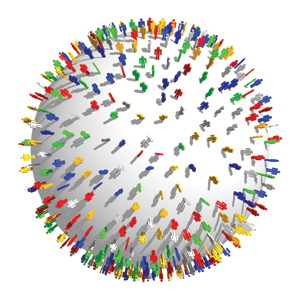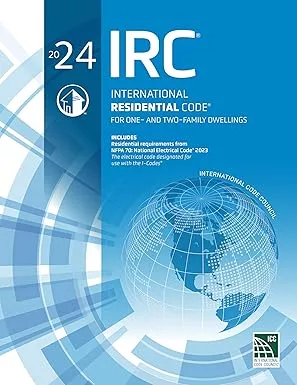U.S. sees narrower budget gaps and stronger banks
U.S. banks are getting stronger.

|
| Photo credit: ©istockphoto.com/heizfrosch |
In an objective but optimistic projection, the Congressional Budget Office recently forecasted a continued narrowing of the budget gap that began its downward slope in fiscal year 2013, which ended Sept. 31, 2013.
The CBO is an independent, nonpartisan agency that analyzes the federal government’s expenditures and tax receipts on an ongoing basis. It is the first independent agency to project a substantial net budget narrowing for fiscal 2013, primarily due to major U.S. Department of Defense expenditures, as well as the string of “stealth” taxes quietly passed by Congress late in 2013 and effective this year.
With Iraq and Afghanistan cutbacks already in place, further DOD shrinkage has caused the CBO to lower its 2014 fiscal year budget deficit forecast to $492 billion, or $23 billion less than originally estimated. That’s equivalent to 2.8% of gross domestic product, the smallest deficit since 2007.
Significantly, the U.S. budget deficit has averaged 3.2% of GDP since 1980, indicating a return to a more rational balance between tax receipts and government expenditures. It also represents the end of the more than trillion dollar annual deficits of fiscal years 2008 through 2012.
With a realistic final expenditure of $680 billion for fiscal year 2013 in hand, further narrowing in 2014 and 2015 seems well underway. Although the 2015 fiscal year will witness a further gap-closing of the near $500 billion range projected for the current fiscal year, a new widening is expected to return in fiscal year 2016.
With an aging population and a greater proportion of government spending for the already bloated health-care sector, representing close to 18% of total GDP, it will be up to the ongoing confrontation and hopeful compromise between the executive and legislative branches to keep the reins tight going forward. This will be heavily dependent on the outcome of this year’s November mid-term elections and the hotly contested 2016 presidential sweepstakes.
Although the current $17.5 trillion U.S. debt weighs heavily on a nation that reflects a near 100% comparability to the annual U.S. gross domestic product, the current low interest rates keep the huge debt funding outlays in check for now. A return to more normal interest rate levels, double those now in existence, could be calamitous to future federal outlays.
For now, the major credit rating agencies are impressed with the progress being made, which guarantees the current superior ratings that the U.S. government debt enjoys.
Stress tests reveal bank strengths
Although the main objective of the Federal Reserve Bank tests, which most major U.S. banks passed with flying colors, was to evaluate banks’ ability to successfully cope with a future universal financial breakdown, it inadvertently also disclosed the relative strength of America’s leading financial institutions.
Heading the group’s leading five in terms of total capital return, buybacks and dividends, Wells Fargo led all three categories by a wide margin. It was followed by JPMorgan Chase, American Express, Bank of America and Bank of New York Mellon.
According to a Wall Street Journal report, Wells Fargo’s lead in all three categories was so overwhelming it easily outdistanced the other major participants by their total capital return of almost $25 billion. This brought Wells Fargo close to the combined total results in this category by the runner-ups.
The stress tests reaffirmed that the American multitrillion banking sector has emerged from the recent financial “bloodbath” to be stronger than ever by a substantial amount. There is no doubt that the rescue efforts engineered by Fed Chairman Ben Bernanke, then U.S. Treasury Secretary Hank Paulson and the cooperation by leading banks to absorb such once-dominant financial entities as Countrywide Savings and Loan, Washington Mutual, Wachovia and Merrill Lynch brokerage did much to keep America’s overall financial order from collapsing in the wake of the Lehman Brothers disaster.
In the midst of an unsatisfactorily slow-moving recovery, high unemployment recovery and regulatory hurdles, it comes as a refreshing breath of hope that the U.S. banking sector is more sound than ever.
With the rock-ribbed solidarity of America’s financial institutions, together with the natural resources and technological advances that America dominates, the nation’s economic future reposes on the financial bedrock that undergirds what will be a major economic leap forward in the years ahead.
Consumer demand accelerates
While most analyses of the world’s future economic growth dwell on the metamorphosis from agrarian societies into commercial/industrial development, little has been projected regarding the awesome growth of consumer demand.
While a world population rising from the current seven billion-plus to nine billion is highly likely by mid-century, world consumer demand may be greatly underrated by those observing future global growth.
Practically all attention as to the potential of bare subsistence to a level of consumer behavior existing primarily in the United States, Europe and China is focused on such rapidly developing disparate nations as India, Vietnam, South Korea and Mexico. In each case, the impact of social media plus the dizzying pace of modernization has been unexpected in the results already achieved.
What will bring the pace of discretionary consumer demand level substantially beyond expectations in the next quarter century is the consumer demand growth percentage occurring primarily in those nations currently in the process of industrial/commercial growth and the appetite for consumer satisfaction that accompanies these anticipated changes.
With middle-class consumers having doubled since 1980 to a total of two billion in 2014, this sector is now increasingly expected to reach five billion by 2030. A growth to 15% or 20% of annual GDP would revolutionize the innumerable end-use industries catering to consumers, including electronics, transportation, health care, food service, etc.
HELPFUL LINKS:
Looking for a reprint of this article?
From high-res PDFs to custom plaques, order your copy today!






